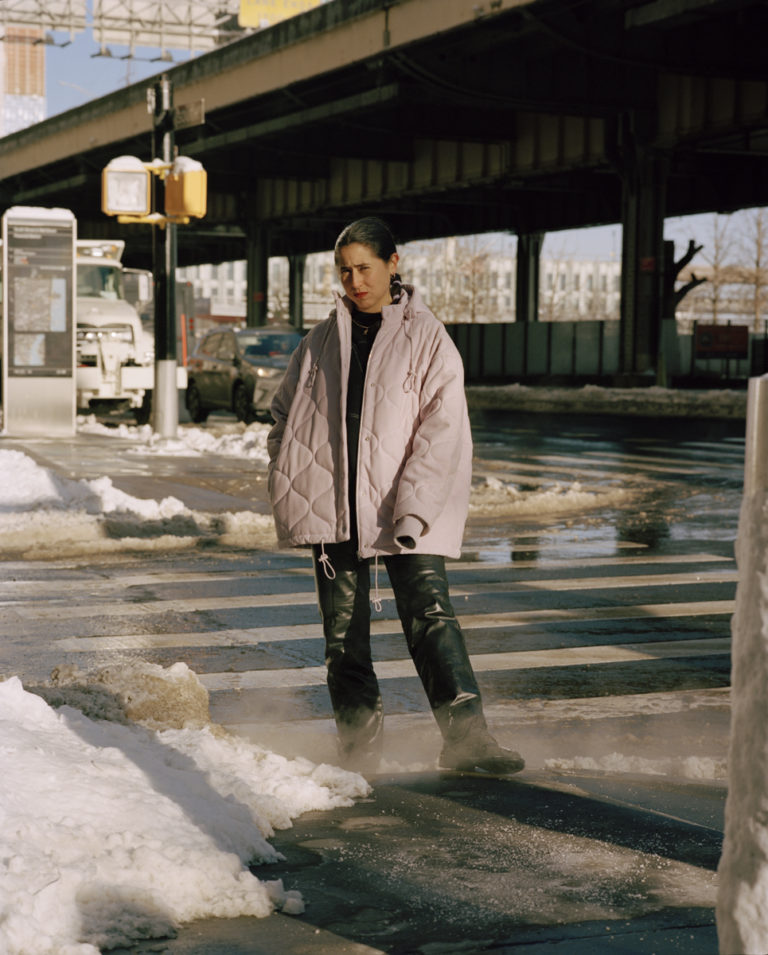NAAR: Hello Meriem, how are you? I believe you’ve had a lot of work recently, on several exhibitions?
Meriem Bennani: Hi!! It’s been a busy year for sure, I’m very happy and to be honest I am kind of ready for a short break, just to recharge and make sure I have the time to be bored and explore new ideas outside of the path of thoughts and interests I have set for myself. I want to learn new things and think about new things.
NAAR: You grew up in Rabat and studied in Paris and New York. What made you stay in New York afterwards?
MB: Paris is where I naturally went after going to French school in Rabat, but New York was never supposed to happen. I loved it so much after a visit and an exchange semester there that I decided to stay. It was the first place I would live that was fully a decision and not just where I was set to go. I can’t explain why I love New York without sounding obvious, I just find it extremely exciting for artists. It’s a tough place to be and people are a little too carrier oriented but it’s never boring or static, which I love.
NAAR: Let’s talk about your project Fardaous Funjab, that had quite a success. It is a reality TV parody in which we follow Fardaous, a fashion designer who invented the Funjab. Fardaous says she noticed that more and more Moroccan women were wearing the hijab, like some sort of fashion trend. She draws a parallel between the influence of Egyptian movies in the 60s and the more recent influence of Gulf States channels on the way Moroccan women dress. Isn’t the Funjab a bit of a collission between religion and pop culture ?
MB: It could be.. I think religion is omnipresent in pop culture and culture in general, so in a way I am just using the oldest collision in the world. I always say that Fardaous is not about religion, because I don’t want to and am not qualified to talk about religion. In many ways the central subjects in the Fardaous Reality TV show are contemporary entertainment methods and certain aspects of moroccan society that I grew up in. In other words, there is a class and social satire, but no mention is ever made of religion. I did notice indeed that the Hijab had been extremely popular in Morocco in the next decade or so, although I don’t think people’s faith has deepened. It’s a visual change in the practice of islam that I noticed.
NAAR: Fardaous designs very convenient Funjabs for all circumstances and for all tastes. However, the headscarf is also one of the expressions of a broader order for women to hide their bodies. While Fardaous Funjab can be seen as a criticism of the hijab, I have the feeling that your speech is more one of acceptance. Am I right ? If so, why do you make that choice?
MB: Yes. I am completely opposed to criticizing the hijab, because I simply think that there is no such thing as the hijab. Each women wearing a hijab has different reasons behind it, and I think that being against the veil is a lack of tolerance. I obviously don’t support the endless amount of pervs roaming the streets of my beloved country who think that women bodies are only off limit if covered in fabric (by don’t support, I mean that if I had a remote that could send them to space, I would probably hit that button..). I just think that constantly talking about muslim women as victims is limiting, insulting and wrong. Fardaous is a badass business woman, that’s a very important aspect of her character, but talking about the religious implications of her practice always wins.
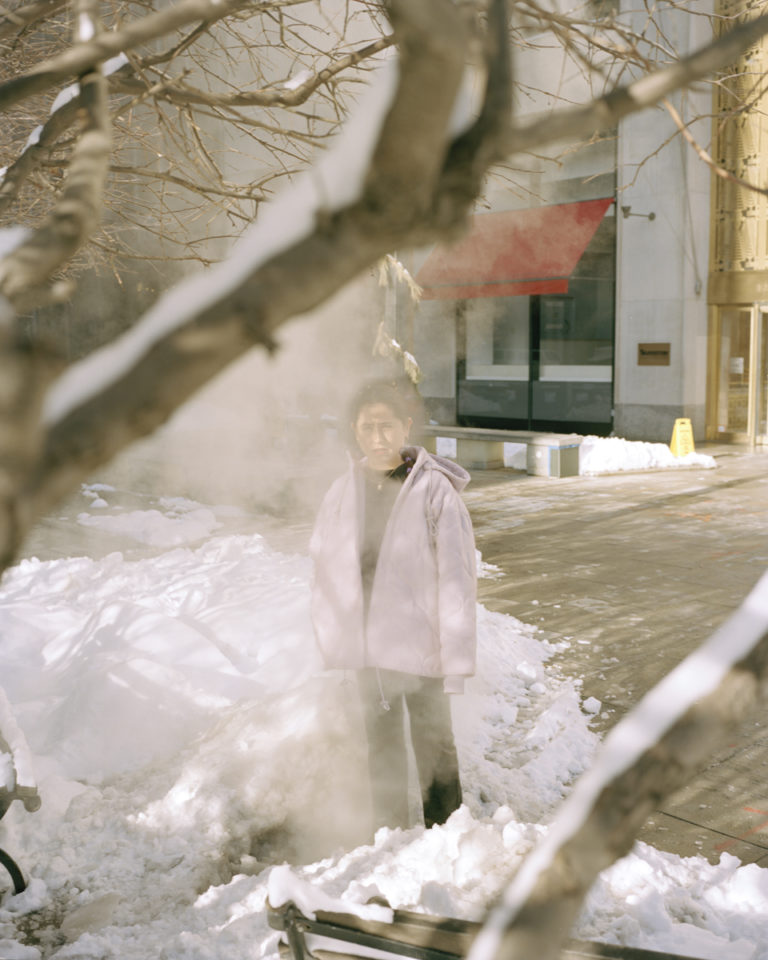
NAAR: Still, on Moroccan beaches, you can see young girls bathing with their clothes on while young boys walk bare-chested. And the fact that women are less free than men in public spaces is intensified. Is there a feminist ambition in your art? What form does it take?
MB: The real problem is not how people dress, it’s about education, women’s right and equality. Clothes are the most visible symptoms of these issues. Countries like France are obsessed with the fabric aspect, maybe because it never fails to deliver sensational visuals to talk about Maghrebi women in France and North Africa. There is a feminist ambition but not in any way that structures the work explicitly. It’s embedded in it, because of who I instinctively chose to give visibility to. For example, I think a lot about what it’s like to be a single moroccan woman living in her 50’s. That’s an age and marital status combination we don’t get enough of on TV in general. I know a lot of women in my family in that situation and I always wonder: is it hard to meet guys ? To go on dates? To have casual sex and also fall in love ? Is there less social pressure because they are older and have been married? What if they were never married.. does that mean some of them might still be virgins? I would love to see a movie about a moroccan woman in her 50’s and her love life. I also think that the women I chose to film have a type of femininity that is so over the top it feels like another gender, extremely queer. So there is a general exploration of gender and sexuality, not just feminism.
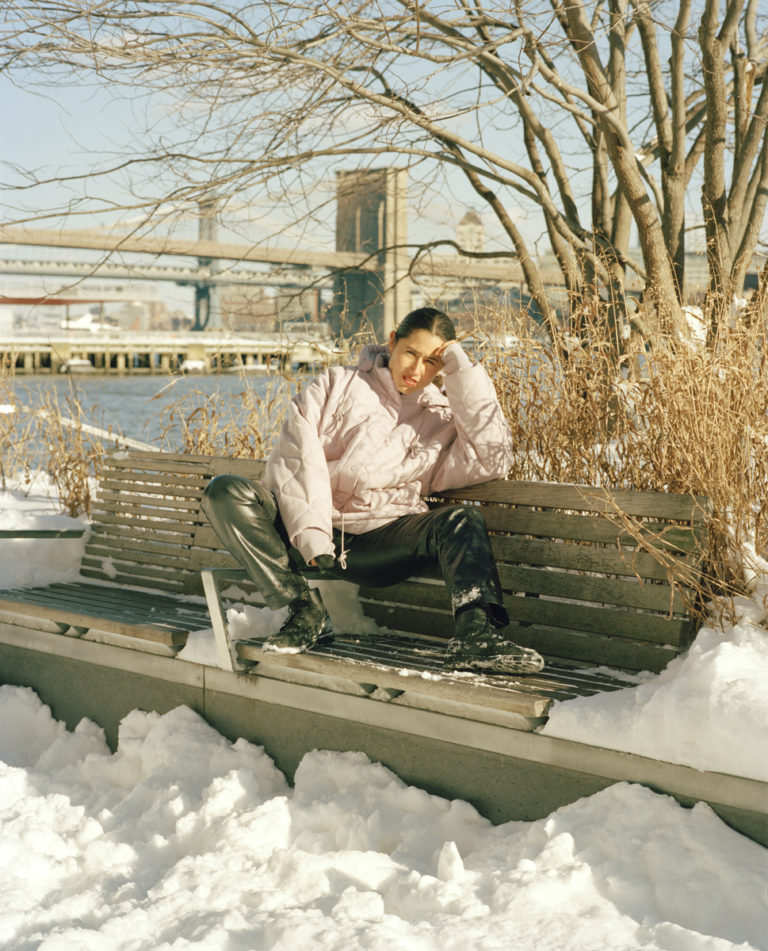
NAAR: You had a show in Dubai recently, which was commissioned by Art Dubai 2017, a contemporary art fair. Was there a specific theme? Did you have any restrictions, and if so, how did you deal with them?
MB: There wasn’t a set theme, but a specific location I had to work with. It was outdoors on this artificial island in this area of the Jumeirah hotel that feels like a Disneyland version of Marrakech. It was very fun for me to work outdoors because it forced me to find a solution for showing videos in full daylight. I made these sculptures that are viewing stations for videos. Actually, the videos inside were portrait of 4 women in my family talking about love.
NAAR: What does it mean for you to be a contemporary artist in Arab countries?
It means that you will constantly be asked about what it means, haha. Well, I am more like an Arab artist in a non-Arab country. It means nothing and everything, depending on your tolerance to categorization. If I wanted to be negative, I’d say it means that you are somehow locked into the position of constantly working within a market that has been built around western expectations. It also simply means that you are Arab and lucky to have grown within an endlessly rich culture with an amazing sense of humor!
NAAR: We can see some women of your family in some of your work. For example, in Fardaous Funjab or Ghariba, which a modern reality TV about the daily life of 4 Moroccan women. How do you make them feel at ease? How do they react to the pieces of art they appear in?
MB: I don’t know if I make them feel at ease, haha! Most of them are very close to me and used to me filming them. I feel like because they’ve seen my work and the special effects in my video, they always except the worse, and joke about it in anticipation, but they don’t really care. Honestly, when I showed Ghariba to the women who are in it, the special effects made them laugh, in a good way. What actually made them emotional is looking at themselves talking about feelings. I only included what they were comfortable sharing, of course. I feel like it made us closer, because we spent a few hours talking about love, which doesn’t naturally happen with most family members.
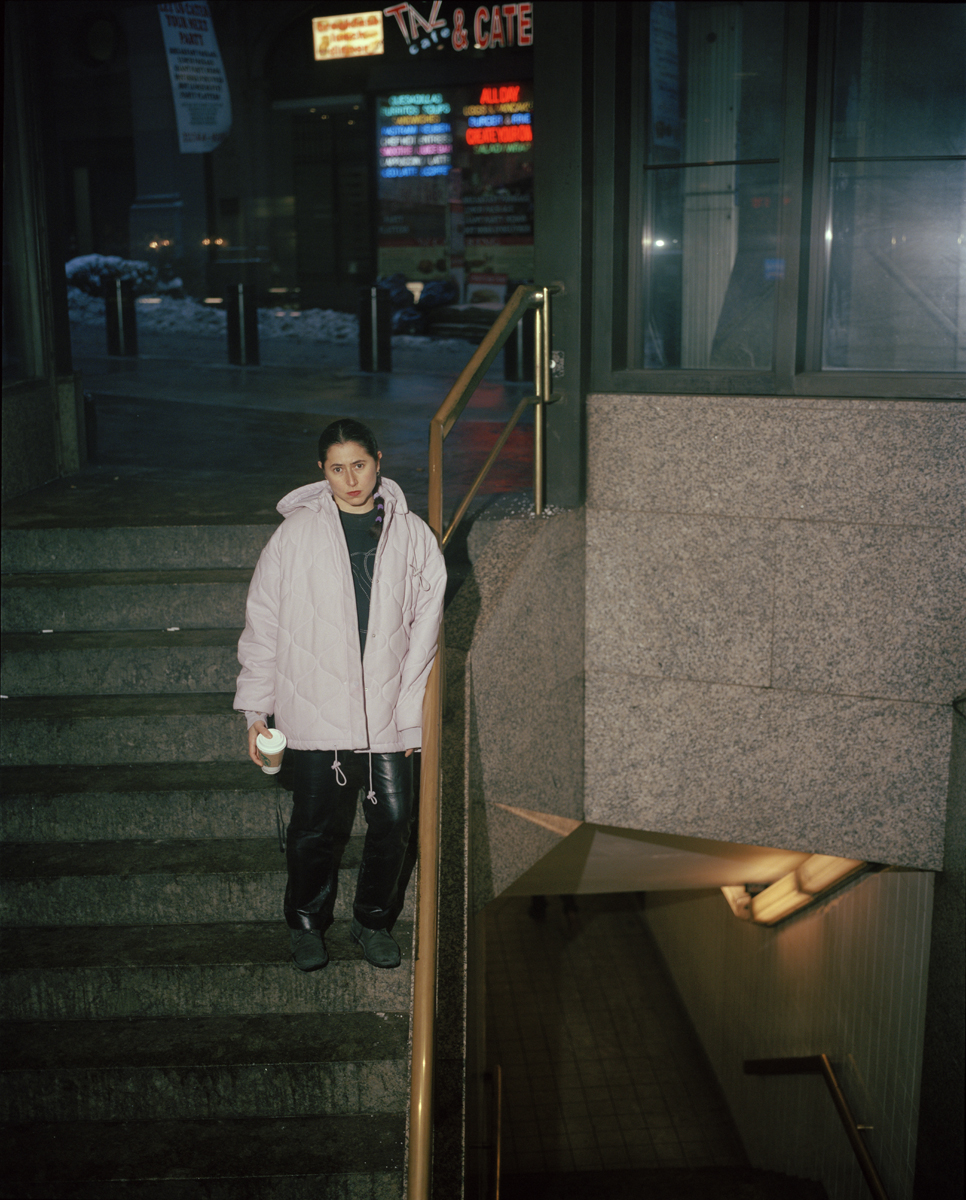
NAAR: Among your video projects, there are music video hijacks, for example a very covered Wicked Games (Chris Isaak) and a Drunk in Love Basketball. In addition to the humor, I thought it was interesting to see what you did with those 2 music videos. The revisited Wicked Games made me think quite directly about extremely covered women bodies in some Muslim countries, but also about how women are still depicted in Western countries : half-naked, in sensual poses and who only have their attractiveness to offer. Same thing to me with Drunk in Love, I thought it was quite unnerving to see Beyoncé dancing in a very sexy fashion, and then you see a laid back Jay-Z who isn’t even asked to look at the camera. Are those, two things you wanted to put into perspective?
MB: To be honest, there wasn’t necessarily a comment on Hip-Hop culture and feminism in my Beyonce Basketball video, although I think that’s an important subject. It was a very silly idea of hijacking the video of a pop star that is so obsessed with being perfect. The Wicked Games video is different. I don’t think I would make this video again today, it’s visually efficient but a little gimmicky and .. I don’t know. I had just seen this couple on the beach on a very hot day, walking hand in hand, and the woman was wearing a Niqab (very different from a hijab), while the man was in a bathing suit. That’s where the idea came from.
NAAR: Can you tell us a bit about your new projects on the Chikhat in Morocco? You recently exhibited Siham & Hafida at The Kitchen in New York. For you, what do they evoke?
MB: The Chikha is the female vocalist who sings Aita music. There are a lot of negative and objectifying misconceptions around the Chikha figure in popular culture. What I learnt when I researched the genre a little bit was that Aita is a repertoire of songs written “a long time ago”. This meant that the lyrics were a precious archive of darija evolution (Moroccan dialect, therefore never really written ) and Moroccan history. Aita is Moroccan literature, poetry, history and activism circulating through the bodies of the Chikates, these women who get so much shit for belonging to nightlife.
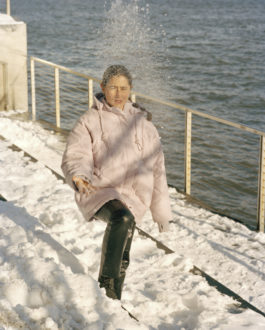
NAAR: In an interview for The Fader, you say that people like Siham and Hafida don’t think Chikha Tsunami is a real chikha. But can’t she also be seen as some kind of updating for the Chikha tradition? The Chikhat have always been rebels. In a very different way, aren’t the Chikhat like Chikha Tsunami leading a kind of rebellion in defending the right to have control over their own bodies?
MB: I think that what Siham and Hafida mean is that Tsunami is more of a dancer / entertainer, than a vocalist. They talk about how she hasn’t gone through a proper training. Aita is like Jazz, it’s very complex and you have to learn to count specific measures that change multiple times within one song, etc.. They are also understandably spiteful because Tsunami is balling, playing every VIP party and wedding in Casablanca while they are completely forgotten by the ministry of culture, although they preserve a very important moroccan art. There are a couple Aita festivals, but that’s it.
NAAR: How does the art world that surrounds you perceive your projects? Do you feel that people are sensitive to the different issues that you raise (for example the place of women in societies, or the acceptance of Muslims in Western countries)? Or do they mainly take the « exotic » and ironic angle of your creation?
MB: Most of my feedback comes from America, since I live and work here most of the time. My friend and excellent curator !) Martha Kirszenbaum said something one day that I think answers your question. She talked about how people are so politically correct here that they are often scared to ask some questions or talk about some aspects of the work because it’s foreign, which limits the potential for productive and challenging conversations. So it’s almost like the opposite of being exoticized, it’s the fear of it, which ironically creates a distance that is very similar to the avoided reaction.
[People] are often scared to ask some questions or talk about some aspects of the work because it’s foreign.
NAAR: How does the art world that surrounds you perceive your projects? Do you feel that people are sensitive to the different issues that you raise (for example the place of women in societies, or the acceptance of Muslims in Western countries)? Or do they mainly take the « exotic » and ironic angle of your creation?
MB: Most of my feedback comes from America, since I live and work here most of the time. My friend and excellent curator !) Martha Kirszenbaum said something one day that I think answers your question. She talked about how people are so politically correct here that they are often scared to ask some questions or talk about some aspects of the work because it’s foreign, which limits the potential for productive and challenging conversations. So it’s almost like the opposite of being exoticized, it’s the fear of it, which ironically creates a distance that is very similar to the avoided reaction.
